Healthy, dense, lush grass is something every homeowner wants for their lawn. So, you would be upset if the grass in your yard is not growing to its full potential or has bare spots here and there. I know what it feels like to plant Zoysia grass in your yard, care for it and not see any results. Spoiler alert! It’s incredibly frustrating! In this article, let’s talk about how fast does zoysia grass spread.
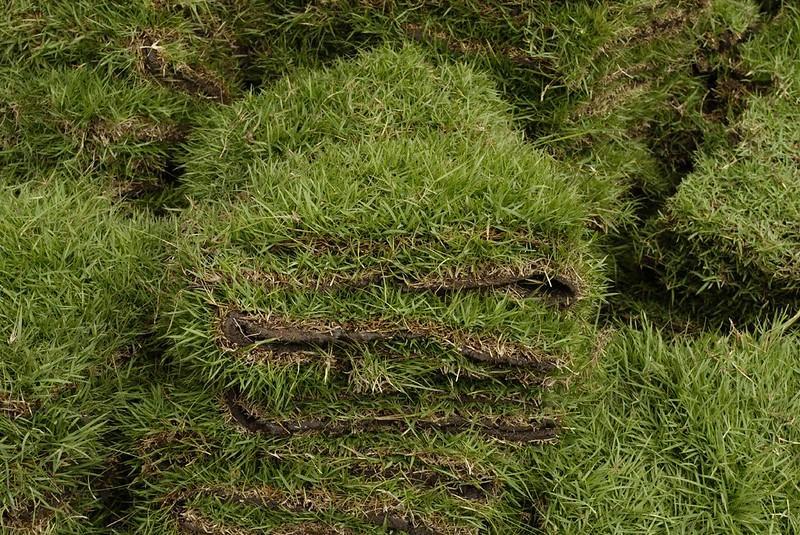
Zoysia grass is a popular choice for lawns in the United States due to its lush and dense growth.
Compared to other grasses, Zoysia grass spreads slowly, and it may take up to three years for a Zoysia lawn to fully establish. However, it is worth the wait. Zoysia grass looks great with its light green color and dense growth. In addition, it fills in bare spots on a lawn over time and is relatively pest and disease free.
Please keep reading to learn more about Zoysia’s benefits and how to make it spread fast!
Zoysia Basics | Understanding Zoysia Grass
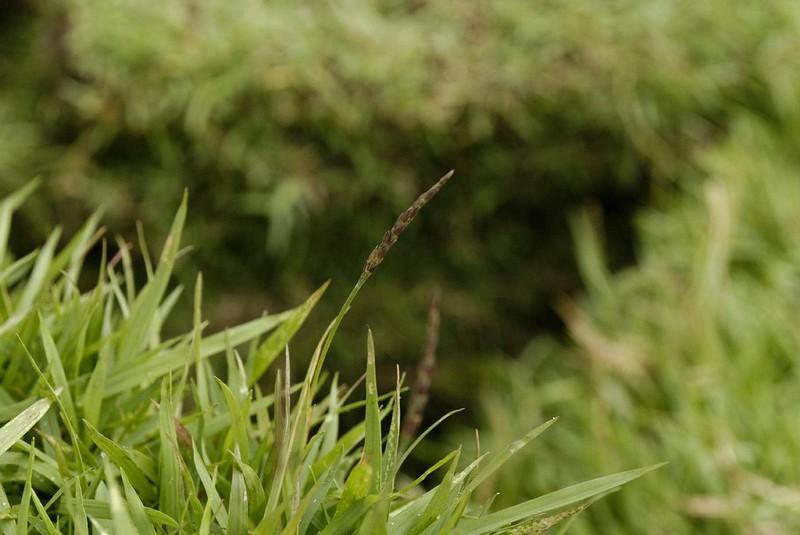
Zoysia grass grows best in USDA planting zones 6 to 11.
Let’s start with the basics.
Once established, Zoysia grass is known for its resilience and durability. However, before I give you tips on establishing Zoysia grass and making it spread fast, you first need to understand its basic needs and requirements. This will help you determine whether or not Zoysia grass is a good choice for your lawn and intended use.
Ideal Location
Zoysia grass grows best in the southern states of the United States or in states where the winters are relatively short and less harsh. Here the grass remains greener for a longer time before it goes dormant and then turns brown in cold temperatures.
However, unlike many other warm-season types of grass, Zoysia endures cold weather better. It only goes dormant once the temperatures are consistently below 55 degrees Fahrenheit for a few days straight. It grows best in temperatures of 80 to 95 degrees F.
Ideal Soil
Zoysia grass can grow well in many different soils, so you will not have to jump through hoops to amend your yard soil to make it a good home for Zoysia grass seeds, sods, and plugs. However, it does best in partial clay to partially sandy soil with a pH of 6 to 6.5.
So, if your soil is too acidic or alkaline, you must amend it with organic mulch or lime before planting Zoysia grass. Also, if your soil is too sandy or clay, you will need to amend it so that the water does not drain too quickly or too slowly.
Dormancy
If you and your relatives both have Zoysia grass lawns, but you live in a northern state, and they live in a southern state, their grass will look greener if compared at the same time. The temperature-dependent dormancy of Zoysia grass can explain this.
Zoysia grass turns brown and goes dormant when the fall arrives and the temperature falls below 55 degrees Fahrenheit. This means Zoysia lawns in the south will start to green up early and remain greener longer due to the more favorable temperatures.
RELATED: Zoysia Grass – Popular Types | How To Choose The Right Zoysia For Your Lawn
How Fast Does Zoysia Grass Spread?
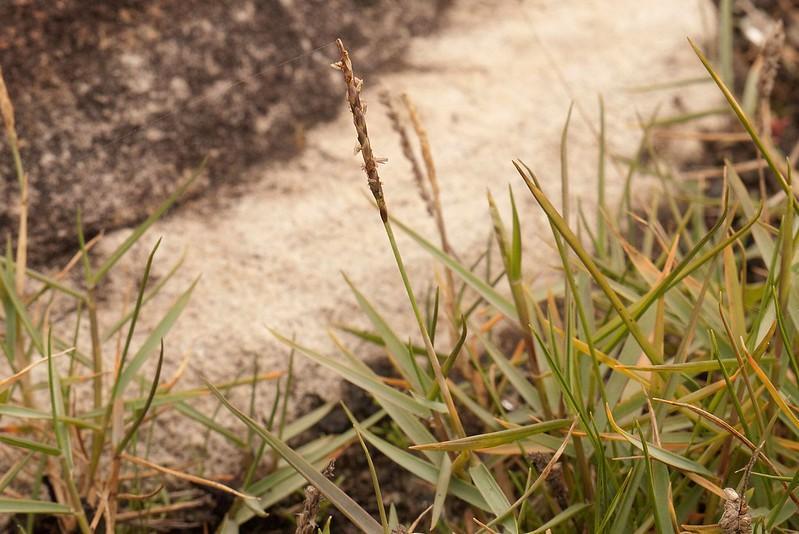
Depending on how you plant Zoysia grass, it can take a few weeks to a few months to establish itself.
Zoysia grass takes somewhat longer to establish itself than other lawn grass types. However, once fully established, it becomes a quick grower and spreads rapidly. It is also important to note that some Zoysia cultivars, such as El Toro Zoysia and Meyer Zoysia, grow faster than others.
You can find more information about these cultivars at the end of this article.
Nevertheless, when established using seed, you can expect your Zoysia grass to germinate in about 14 to 21 days. In the start, the grass will spread slowly, eventually forming a thick carpet of lush growth throughout your yard. However, most people choose to plant Zoysia grass with sod or plugs as it takes too long when established with seeds.
The speed at which your Zoysia grass grows and spreads will also depend on the region, local climate, and the amount of upkeep you provide to your yard.
Nevertheless, depending on how you establish your Zoysia grass lawn, it could take anywhere between a few weeks to a few months to fully establish itself.
Usually, after germination, Zoysia grass starts to spread within about three to four weeks, and then within another three months, it fills up the yard. However, it is worth the wait as Zoysia grass, when fully established, creates a lovely, dense, and lush lawn.
How Does Zoysia Grass Spread?
Unlike most lawn grasses which spread via rhizomes or stolons, Zoysia grass spreads using both, a unique character among grass species. It is why, once established, Zoysia grass spreads and fills the space much more rapidly than other grass types.
Do you not know what rhizomes and stolons are? Do not worry!
Stolons are grass stems that grow horizontally above ground, giving rise to new plants at nodes when they come in contact with the ground.
In contrast, rhizomes are below-ground stems that give rise to new adventitious roots and lateral shoots at nodes. Another difference is that stolons branch away from the stem, whereas rhizomes remain part of the central stem.
Zoysia is a favorite of lawn owners with pets, children, and people that hold many outdoor activities. It is hard to beat this grass because of its unique spreading method. No matter how damaged, stolons and rhizomes make it come back after some time.
When To Plant Zoysia Grass For Fast Growth?
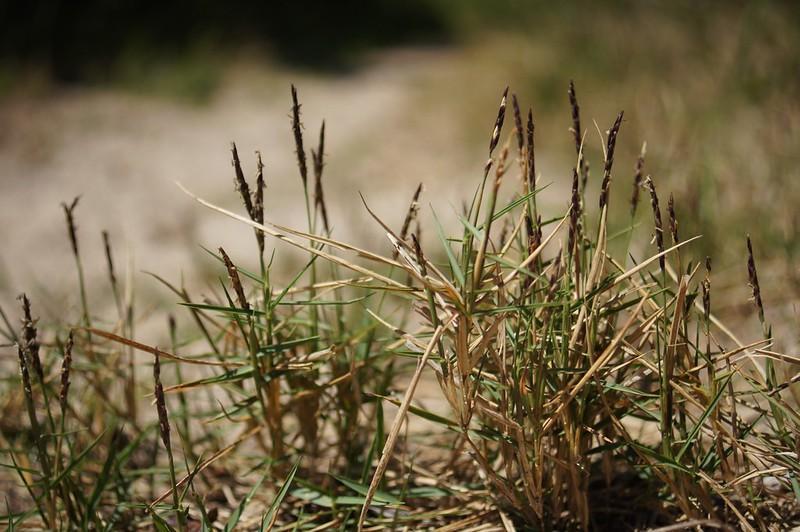
The best times to plant zoysia grass are late spring and early summer.
Zoysia grass is native to the Western Pacific Rim, including countries like Australia, the Philippines, and Japan. These countries have a hot climate, so Zoysia grass has been conditioned to thrive in the heat. However, the grass goes dormant in the winter.
If you plan to plant Zoysia grass, it is the best time to do it in late spring or early spring. You should also ensure that you plant your Zoysia grass once the threat of frost falling has passed. Young Zoysia grass plants can survive cold weather,
Zoysia will start germinating/growing once the temperature is consistently over 75 degrees Fahrenheit. Zoysia is a slow grower, but it creates a dense lawn.
Growing Zoysia From Seeds
Establishing a Zoysia grass lawn from seeds is the most cost-effective way to create a new lawn, overseed an existing grass lawn or fill in bare spots in your yard, primarily if those bare spots cover your lawn. To do this, you will first need to determine the best planting window for Zoysia grass seeds based on the USDA zone you live in.
Depending on your zone number, you must plant your Zoysia grass seeds between March 15th and May 20th. Once you have planted the seeds, it will take about 21 days for the seeds to germinate, a little longer than other grass types.
To plant seeds, loosen up the soil and spread a thin but uniform layer of grass seeds over the area that needs to be planted. Next, scatter a thin layer of soil or mulch over the seeds to ensure better seed-to-soil contact. This will increase seed germination.
Zoysia grass has a shorter than average root system compared to other grasses. The roots only reach about two inches below the surface of the ground. This may seem like a disadvantage, but it allows the grass to benefit from the richness of the topsoil.
Growing Zoysia From Sod
If you have large patches of bald grass in your yard, using sod is a great way to fast-track the growth of the lawn. It takes only ten days to establish Zoysia grass from sod.
Like seeds, the sod should be placed uniformly across the bare spots. Also, remember that Zoysia grass sod needs to be kept moist when it is getting established. Furthermore, ensure you get the same sod as existing Zoysia grass in the yard.
The more sod you use, the less time it will take for the lawn to establish or for bare spots to fill. The sod will keep spreading until it comes in contact with the grass in the yard or reaches the edges of the allocated space in case of a new lawn.
To plant sod, remove any sticks, stones, or existing vegetation from the area. Next, use a rake or tiller to loosen the soil. Once done, place the sod and make sure that it makes good contact with the ground below and that there are no air spaces in between.
Keep the sod well-watered until you see the stolons take hold!
Growing Zoysia From Plugs
Another way to establish a Zoysia lawn is to use plugs. They establish into a yard quicker than seeds; however, they are slower than sod. There is not much difference between plugs and sod. Plugs are essentially sod cut into smaller pieces to fit into oddly shaped or tiny places in a yard. However, you can also use them to establish a new yard.
Once a plug is planted in a one-foot center, it takes about three years to fill that space. Therefore, if you are looking for a quicker establishment rate, we suggest placing the plugs much closer to each other.
Nevertheless, to establish Zoysia grass from pugs, you will first have to clear the area of any debris, stones, rocks, and grass. If your soil is too much clay or sand, amending it could help your plush establish itself and spread much faster.
Of course, it is vital to keep the plush moist to help the roots establish themselves.
Growing Zoysia From Sprigs
Using sprigs is probably the fastest, faster than sod, and one of the cheapest methods to establish a Zoysia grass lawn. Sprigging is the process of using stems instead of seeds. Sprigs are thin 3- to 6-inch pieces of grass stems or runners without soil.
They can be planted by broadcasting them uniformly over the entire plant-bed area or in furrows and rows, depending on your preference and needs. Over time, sprigs will root and grow together to establish a dense and lush lawn.
RELATED: Zoysia Grass 101: How To Grow A Healthy Zoysia Grass Lawn & What Are Its Pros & Cons?
How To Make Zoysia Grass Spread Fast?
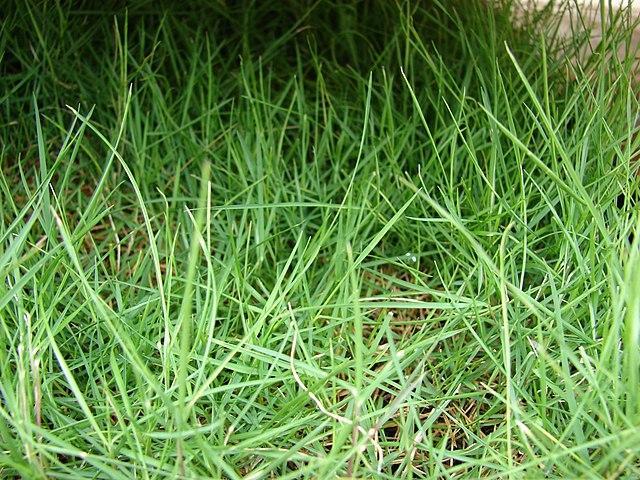
Zoysia grass is a later starter and a slow grower, but you can help it establish quickly.
While there is no replacement for time and patience, you must be itching to know how to make your Zoysia grass spread quickly. The solution to this problem is much simpler (and at the same time harder) than you might think.
If you want your Zoysia grass to grow quickly, you can achieve that by ensuring that your lawn receives adequate care and upkeep. This includes regular watering, aeration, fertilization, mowing, and dethatching, among other things.
Here are some tips to help you give proper care to your Zoysia lawn:
Keep The Weeds Out
Even though Zoysia grass forms a dense carpet of lush grass and weeds are not much of an issue, some plant pests such as dandelions, clover, and wild onion may find their way in. These weeds look unsightly and are a hazard for young grass.
So, if you want your Zoysia grass to establish quickly, ensure that there are no weeds in the ground. If you find any, uproot them immediately. If there are too many, use a selective herbicide against these pesky plants and nip the problem before it appears.
You can also use a phosphorus-free fertilizer to help your Zoysia grass grow even tighter together, which will also help to keep the nasty weeds out of the yard.
Mow Every Now & Then
Another way to help your grass grow quickly and thickly is to mow it often. How? Well, every grass blade’s tip contains hormones that suppress its further growth. If you cut the tip, you free the remaining blade of these hormones, and they start growing.
Furthermore, unlike some sensitive grass varieties, you do not have to worry much about damaging or killing Zoysia grass when mowing. Zoysia grass is tough and quickly recovers from wear and tear when fully established.
Lastly, ensure that you pick up the leftover grass clippings from the yard once it is entirely mowed. These grass clippings can prevent the sunlight from reaching the plants below, which can significantly slow the speed of grass growth in some cases.
Fertilize With A Low-Phosphorus Fertilizer
Many people think that the more nutrients they add to the soil, the faster their Zoysia grass will grow. Well, I am about to change your mind! Unfortunately, it is not always the case. If there is too much phosphorus in the soil, it can make it harder for Zoysia to grow.
High phosphorus content in the soil makes it difficult for the Zoysia grass to take up essential micronutrients such as zinc and iron. Over time, this can significantly slow the Zoysia grass’s growth rate or may even cause its death.
So, when looking for a fertilizer for your Zoysia lawn, use a low-phosphorus fertilizer.
Water Your Lawn Adequately
As already stated, Zoysia grass has a shallow root system about two inches deep in the soil. This means that during periods of drought, it may be unable to keep up with its usual growth rate. This is where deep and infrequent watering sessions come in.
Deep and infrequent watering sessions help the grass roots to grow deeper and stronger. This will keep the grass healthy and robust and help the grass grow more quickly as they absorb the needed water.
However, when deep watering your Zoysia grass lawn, ensure that you do not make the soil saturated with water, so it becomes soggy, which can attract lawn diseases.
Aerate The Lawn Soil
Aeration is the process of punching tiny holes in the yard soil to ensure that air passes deeply into the ground and reaches the growing roots. You might not consider air an essential factor in healthy grass growth and helping the grass grow quickly.
However, the air is just as important for growing grass as water and nutrients. When the growing roots have free access to air, they spread much more quickly and expel more carbon dioxide into the atmosphere, and air in the ground prevents fungal growth on the grassroots.
The reason why grass does not grow well in compact and packed soils is the lack of air. Growing grass and its roots need air. So, if you want your Zoysia grass to spread quickly and establish rapidly, ensure that you aerate the lawn regularly.
Remove Thatch When Needed
Many grass kinds, including Zoysia, have a thatch problem. Thatch is a layer of dead grass and other organic debris that builds up on the surface of the lawn over time. Not removing it will prevent air, nutrients, and water from reaching the ground below.
Thatch can thus significantly slow grass growth and needs to be dealt with. If you have a small yard, you can remove the thatch using a hand rake, or if your lawn is large, use a dethatcher and borrow a vertical mower from a local store.
Once you have removed the thatch, you will see that your Zoysia grass will grow and spread quickly and appear denser and lusher.
Fastest Growing Zoysia Grass Varieties
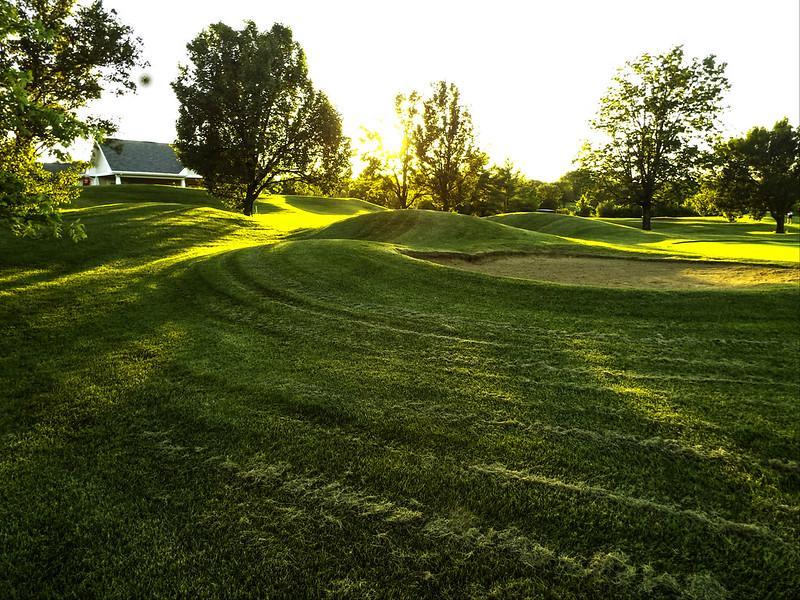
There are many Zoysia grass cultivars, some of which grow faster than others.
Now that you know pretty much everything there is to know about helping Zoysia grass spread faster let us give you a little bit extra. Zoysia grass is a popular choice for law throughout the United States and in many other parts of the world.
As a result, it now comes in many different cultivars, some of which grow and spread faster than others. So, if you are looking for a fast-spreading Zoysia grass cultivar, look no further. We have got you covered. So, let’s dive right in:
El Toro Zoysia
El Toro is a relatively new zoysiagrass that was developed in California. It is the most drought-tolerant Zoysia variety and also tolerates shade well. In addition, it is a soft-textured, light green grass that is dense and can handle lots of traffic.
However, its features do not just end here. El Toro Zoysia is also the fastest-growing cultivar of Zoysia grass, and it produces less thatch than other popular Zoysia grass types. El Toro Zoysia also offers much better cool-season color and has good cold tolerance.
Meyer Zoysia
Meyer Zoysia is the second fastest-spreading cultivar of Zoysia grass. It is a genetically modified version of the below-described Japan’s grass, botanically known as Zoysia japonica. The grass is extensively used in lawns across the United States.
Meyer Zoysia probably has the best cold tolerance of any Zoysia cultivar, but it does turn brown and goes dormant when it gets too cold. However, even then, it has an attractive golden-brown color that is more appealing than the gray-brown color of other cultivars.
Meyer Zoysia will only take about eleven to seventeen months to fully establish itself and form a lawn if given proper care. However, it is slightly more expensive.
Japanese Lawn Grass
Last but not least, Japanese Lawn Grass! It is also known by its other common names, Dwarf eelgrass and Japanese eelgrass as well. The cultivar grows faster than many Zoysia grass types but less quickly than the El Toro and Meyer Zoysia grass.
It was introduced in the United States in the late 1800s, and since then, it has become widespread in yards across the country. It has a dark green color and coarse texture, making it excellent for use in high-traffic areas and lawns.
Zoysia japonica also has excellent heat and drought tolerance, but its cold tolerance is not very notable. It turns straw-colored as soon as the temperature falls below 5 degrees F.
RELATED: How To Overseed A Zoysia Grass Lawn Correctly? The Ultimate Guide
Benefits Of Using Zoysia Grass

Zoysia grass is beautiful and durable and requires very little upkeep and care.
There are many reasons why Zoysia grass is so popular among turf managers, homeowners, and lawn owners. For example, thanks to its dense and thick growth, weeds are rarely a problem, making caring for the lawn much easier and simpler.
Moreover, Zoysia is a perennial grass. This means if grown in a suitable climate and given proper care, it will regrow itself year after year, which means you will have to spend much less on caring for your lawn which in the long run will save you quite a bit of money.
Another essential benefit of planting Zoysia grass is that it is much more durable than other grass types. So, no matter what you throw at it: from heavy foot traffic to lots of outdoor activities and rigorous mowing, the grass will do just fine.
Lastly, Zoysia has excellent drought and shade tolerance. It can survive with as little as 0.5 to 1 inch of water every week and four hours of sunlight daily.
Final Thoughts
Many homeowners complain about how long it takes for Zoysia to take root and spread.
However, while the grass grows slowly, if you take care of it properly, you can enjoy a beautiful lawn. Moreover, it is adaptable, tolerating both hot and cold climates and pounding from heavy foot traffic. So, we suggest you be patient, give your growing Zoysia proper care and enjoy a lawn that is the envy of the entire neighborhood.
Frequently Asked Questions (FAQs)
Will Zoysia Take Over Other Grasses?
When given enough time, Zoysia is invasive and can completely take over an existing grass in the yard. It does so with the help of its dense root system and its ever-spreading stolons and rhizomes.
Furthermore, since it is a prolific spreader, containing the grass can be challenging and is best accomplished with a deep, physical edging barrier.
Is Zoysia Grass Hard To Maintain?
Compared to other types of grass, Zoysia requires little in the way of upkeep. It does, however, have a few noticeable flaws. For instance, it does not respond well to excessive watering and thrives best when kept at a higher height than most other grasses.
How Do You Make Zoysia Grass Greener?
If you want your Zoysia grass to appear greener, mow it to a height of 1/2 and 1 inch once or twice every week during the summer. Also, during the growing season, you should water it regularly once a week and use a high-quality 4-1-2 NPK fertilizer once a month.
How Do You Treat Brown Zoysia Grass?
Multiple factors, such as shearing and overwatering, can result in brown Zoysia grass, but brown patch fungus is the most common reason behind the brown Zoysia grass lawn.
To avoid causing brown spot disease, water first thing in the morning when the dew has dried. Also, do not over-fertilize the yard, as it can burn the grass and make it appear brown.
Will Zoysia Grass Choke Out Weeds?
Zoysia is a fast-growing, invasive grass that can completely smother other plants. It spreads horizontally by “stolons,” or runners, rather than upwards. This means it can effectively replace existing grass and choke off most weeds in a yard.
Sources for Further Reading
Planting and Maintaining a Zoysia Lawn | University of Maryland Extension. (2022). Retrieved December 23rd 2022, from https://extension.umd.edu/resource/planting-and-maintaining-zoysia-lawn
Zoysiagrass Yearly Maintenance Program. Clemson University Cooperative Extension Service. (2022). Retrieved December 23rd 2022, from https://hgic.clemson.edu/factsheet/zoysiagrass-maintenance-calendar/
Establishment and Care of Zoysia Grass Lawns. University of Missouri Extension Service. (2022). Retrieved December 23rd 2022, from https://extension.missouri.edu/publications/g6706
Editor’s Recommendations
How To Get Bermuda Grass To Spread Fast | Bermuda Grass Lawn Care Tips
How To Make St. Augustine Grass Grow Thick & Spread Fast | Tips From Experts
The Best Organic Fertilizers For Home Lawns For A Greener & Healthier Yard







